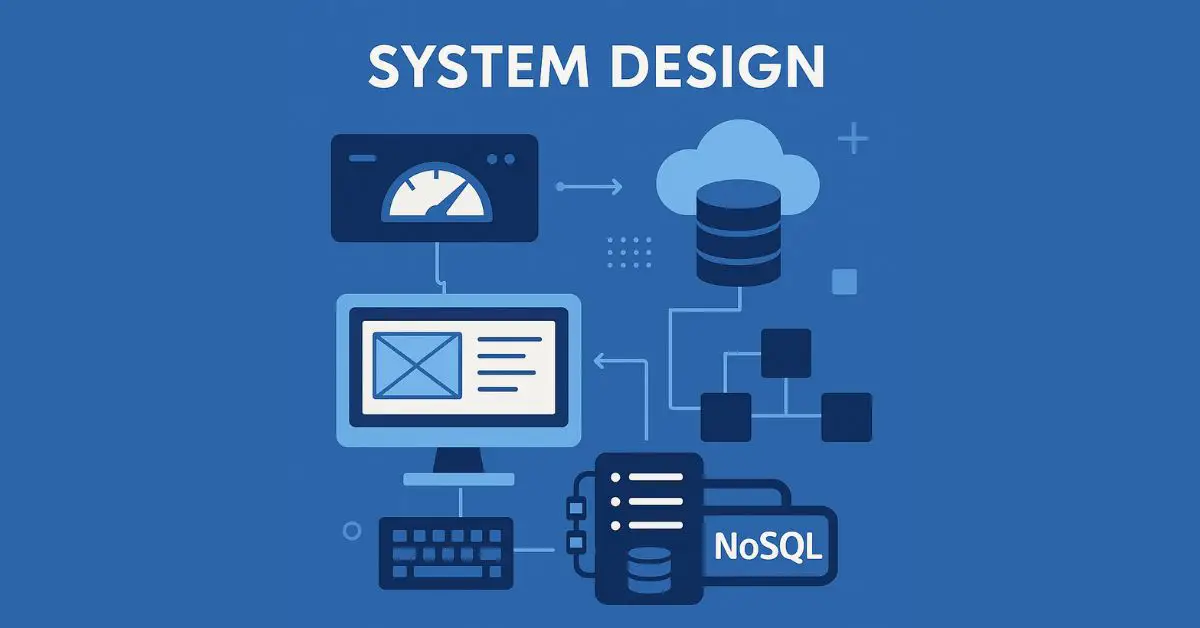|
Getting your Trinity Audio player ready... |
When we talk about building real-world applications—whether it’s a social media app, an e-commerce platform, or even a simple blogging site—one concept plays a critical role behind the scenes: System Design.
You might have heard of it in interviews or discussions around high-level architecture. But what exactly is system design? Why is it so important? And how can you start learning it?
Let’s break it down simply and practically.
🔧 What is System Design?
System design is the process of defining the architecture, components, modules, interfaces, and data flow of a system. Think of it as the blueprint of your application.
Just like an architect designs a building before construction, system design lays the foundation for scalability, performance, and reliability.
🧠 Why System Design Matters
Whether you’re building a simple portfolio site or a complex SaaS product, system design decisions can make or break your application.
Here’s why it’s crucial:
- ✅ Scalability: Will your app handle 10 users or 10 million users?
- ⚡ Performance: Is your app fast and responsive under load?
- 🔒 Reliability: What happens when a server fails or traffic spikes?
- 🧩 Maintainability: Is the system easy to update and manage?
Real-life example: Think of Instagram. Every time you upload a photo, there’s a well-designed system managing storage, delivery, notifications, and security—all in milliseconds.
🛠️ Common Components of System Design
When designing systems, engineers often deal with:
- Load Balancers – Distribute incoming traffic across multiple servers.
- Caching Systems – Improve performance by storing frequently accessed data.
- Databases (SQL/NoSQL) – Store and retrieve data efficiently.
- Queues – Manage background tasks or event-driven architecture (e.g., RabbitMQ, Kafka).
- CDN – Deliver static content faster via global servers.
📈 High-Level Design vs Low-Level Design
| Type | Description |
|---|---|
| High-Level Design | Defines the big picture—overall architecture, APIs, services. |
| Low-Level Design | Focuses on internal logic, class structures, database schema. |
Both are important, but in interviews and large-scale projects, high-level design often takes priority.
💡 System Design Examples
Here are some popular interview and real-world examples:
- Design URL Shortener (like bit.ly)
- Design Instagram backend
- Design YouTube streaming service
- Design a real-time chat app (WebSockets + Load Balancer + DB)
Each problem tests your understanding of data flow, bottlenecks, redundancy, and failover systems.
👨💻 Who Needs to Learn System Design?
- Frontend & Backend Developers (especially mid-senior level)
- Full Stack Engineers
- DevOps / System Architects
- Anyone preparing for FAANG-level interviews
Even freelancers building large-scale client projects benefit from having system design knowledge.
🚀 How to Start Learning System Design
Here’s a roadmap to follow:
- Basics: Learn about DNS, HTTP, REST, database types, scalability.
- Design Patterns: Study commonly used architectures like microservices, monoliths, etc.
- Practice Problems: Try real-world case studies (available on sites like GitHub or YouTube).
- Mock Interviews: Practice explaining your design to others.
📚 Recommended Resources
- YouTube Channels: Gaurav Sen, System Design Simplified
- Courses: Grokking the System Design Interview
- Books: Designing Data-Intensive Applications by Martin Kleppmann
🧩 Final Thoughts
System design is not about writing code—it’s about thinking structurally. It’s about building systems that work at scale, under real-world pressure, and still deliver great user experiences.
So if you’re serious about leveling up your tech skills, don’t skip system design. Start small, go step by step, and soon you’ll be able to design systems that handle millions of users with confidence.
🌐 How to Set Up DNS Using GoDaddy or Hostinger (Complete Guide)
How to Set Up DNS Settings for Google Sites (Step-by-Step)
The Future of Web Hosting: From Shared Servers to Edge Functions
Arsalan Malik is a passionate Software Engineer and the Founder of Makemychance.com. A proud CDAC-qualified developer, Arsalan specializes in full-stack web development, with expertise in technologies like Node.js, PHP, WordPress, React, and modern CSS frameworks.
He actively shares his knowledge and insights with the developer community on platforms like Dev.to and engages with professionals worldwide through LinkedIn.
Arsalan believes in building real-world projects that not only solve problems but also educate and empower users. His mission is to make technology simple, accessible, and impactful for everyone.



